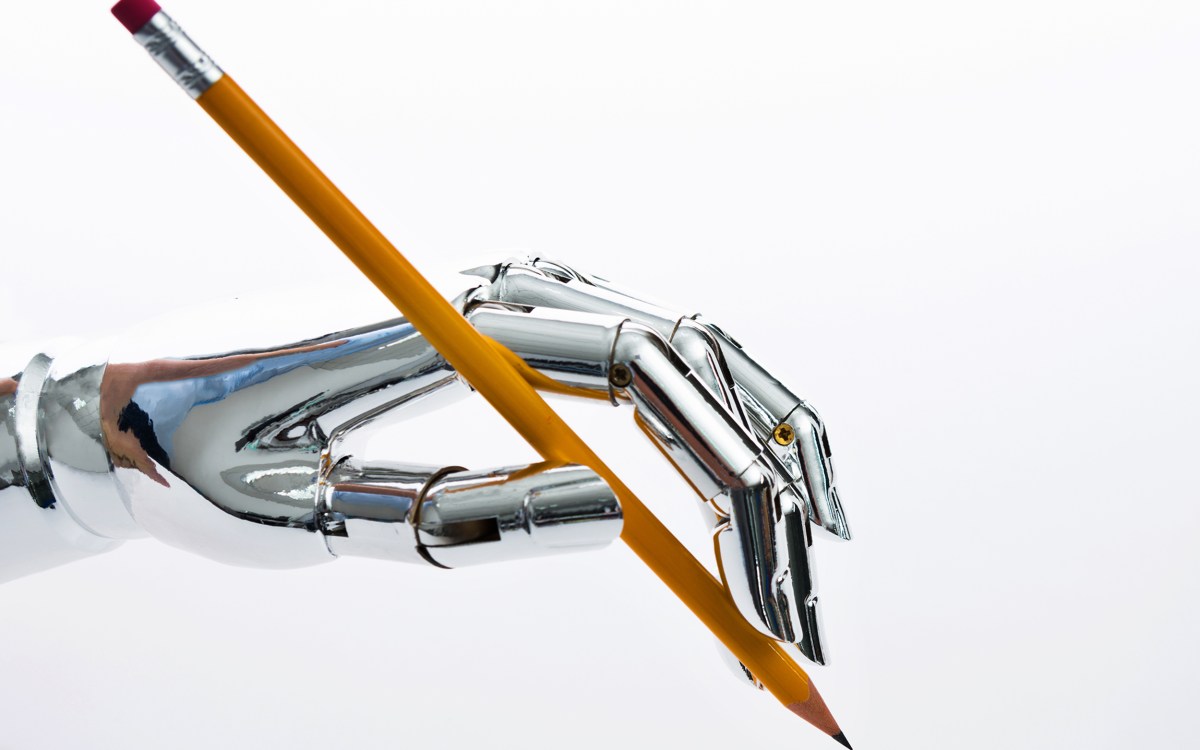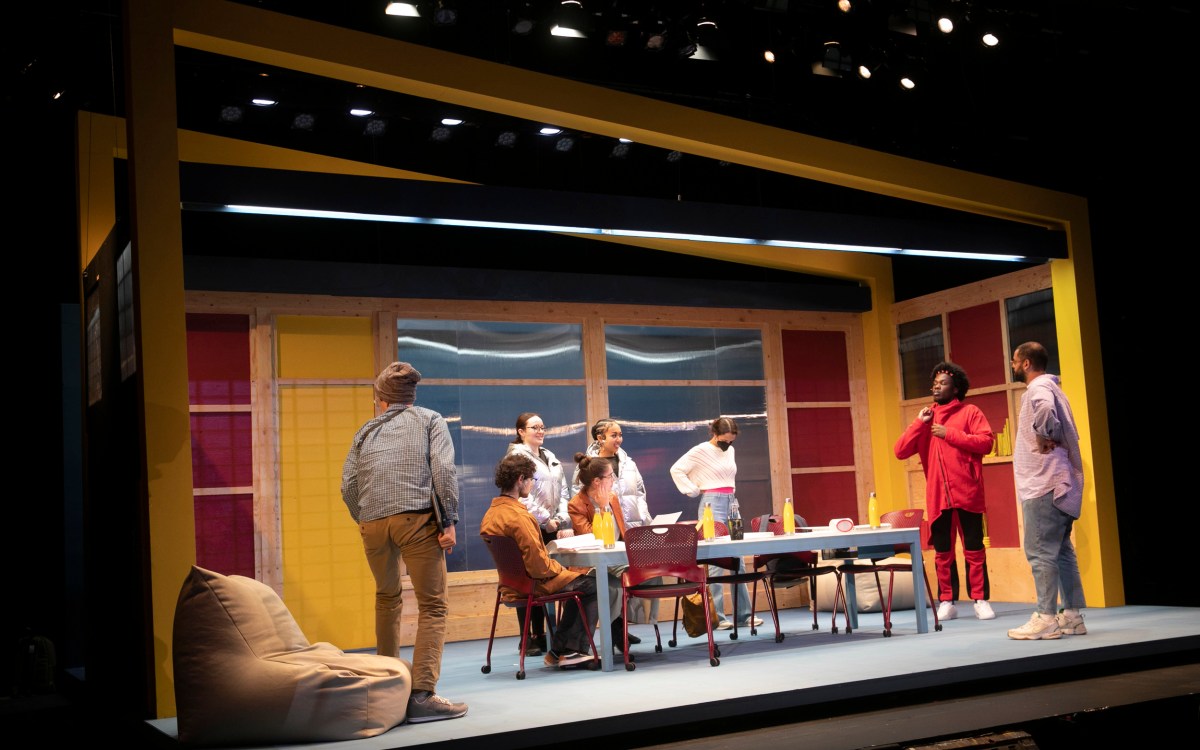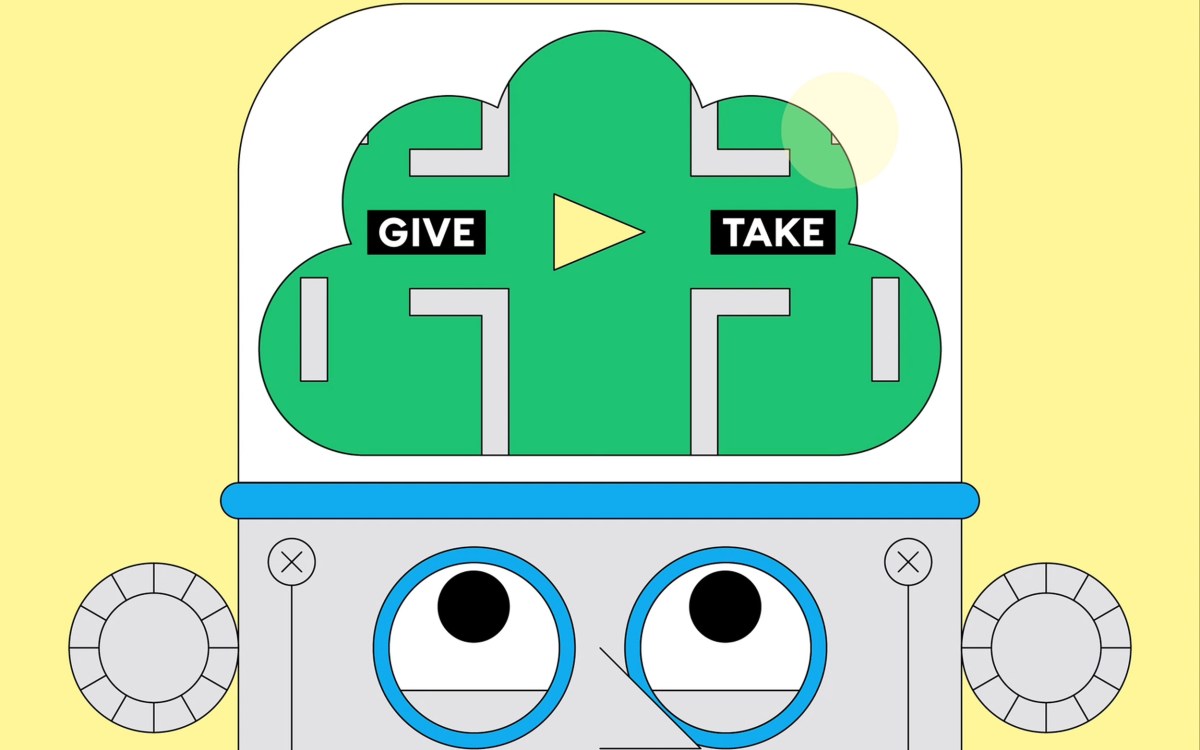If it wasn’t created by a human artist, is it still art?
Illustration by Judy Blomquist/Harvard Staff
Writer, animator, architect, musician, and mixed-media artist detail potential value, limit of works produced by AI
The emergence of AI-image generators, such as DALL-E 2, Discord, Midjourney, and others, has stirred a controversy over whether art generated by artificial intelligence should be considered real art — and whether it could put artists and creators out of work. The Gazette spoke with faculty who are involved in the production of art — a writer, a film animator, an architect, a musician, and a mixed-media artist — to ask them whether they see AI as a threat or a collaborator or a tool to further their own creativity and imagination. The interviews have been edited for length and clarity.
“Most at risk are commercial genres with easily recognizable styles and tropes.”
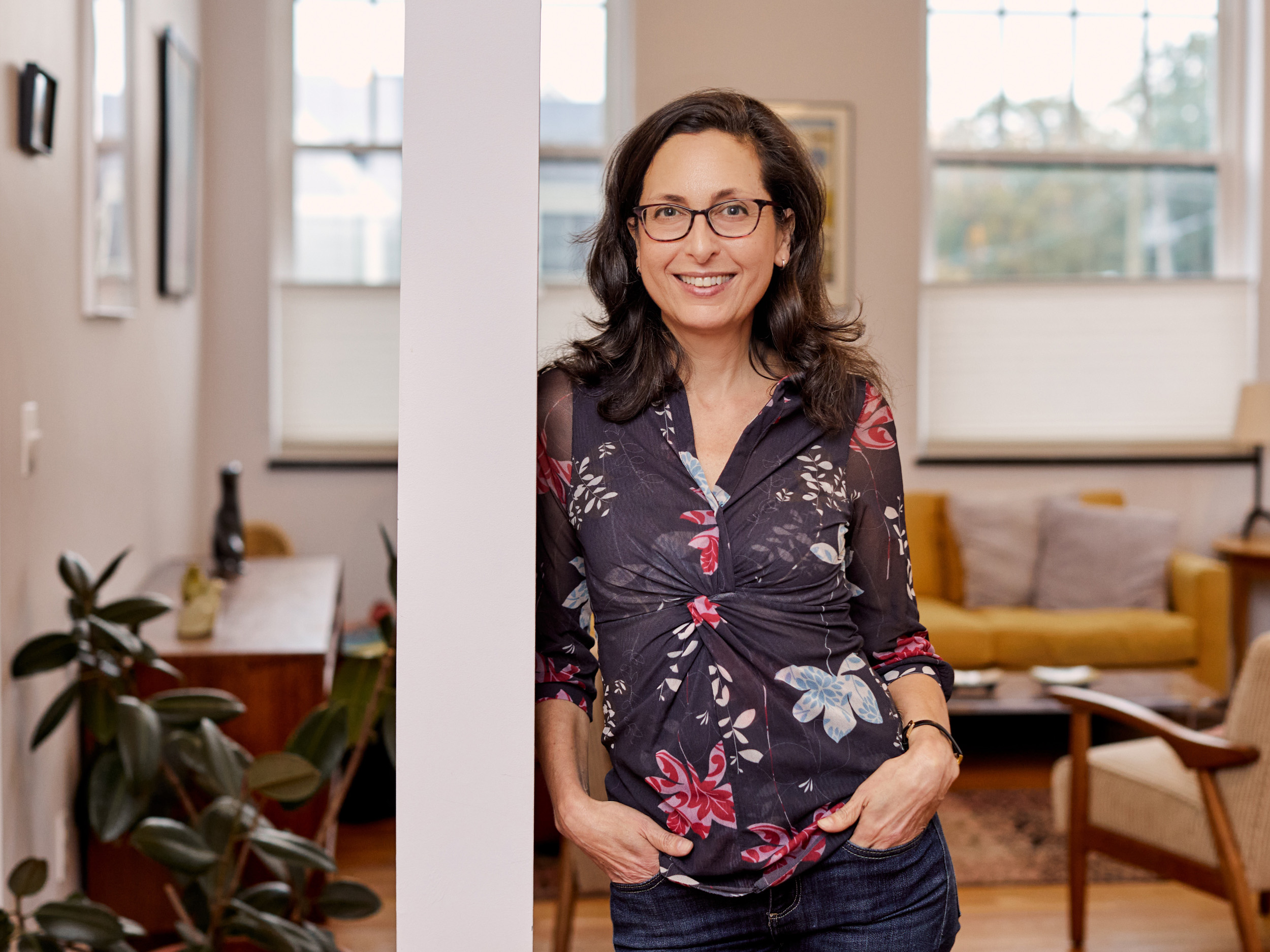
Photo by Sasha Pedro
Novelist and short-story writer Daphne Kalotay, instructor, Creative Writing & Literature Program, Harvard Extension School
I recently judged a story contest, and reading the shortlist was a clue to the challenges AI might encounter in creating good writing versus great. The best of these human-written stories surprised me with 1) unique ways of viewing the world (personality), 2) linguistic originality, 3) inimitable details that could come only from personal experience. Other stories were written deftly yet lacked these elements of originality and surprise. AI is a superb mimic and quick learner and might easily write strong works in recognizable modes, and with linguistic experimentation if prompted, but — I think — will lack true insight and experience. Most at risk are commercial genres with easily recognizable styles and tropes. Even something like autofiction with its ruminating first-person narrators is easily mimicked — but what will be missing, I’m guessing, is genuine vision from living in a specific physical world.
“That sense of interplay, or the ability to react in the moment, is something that artificial intelligence can’t reproduce.”
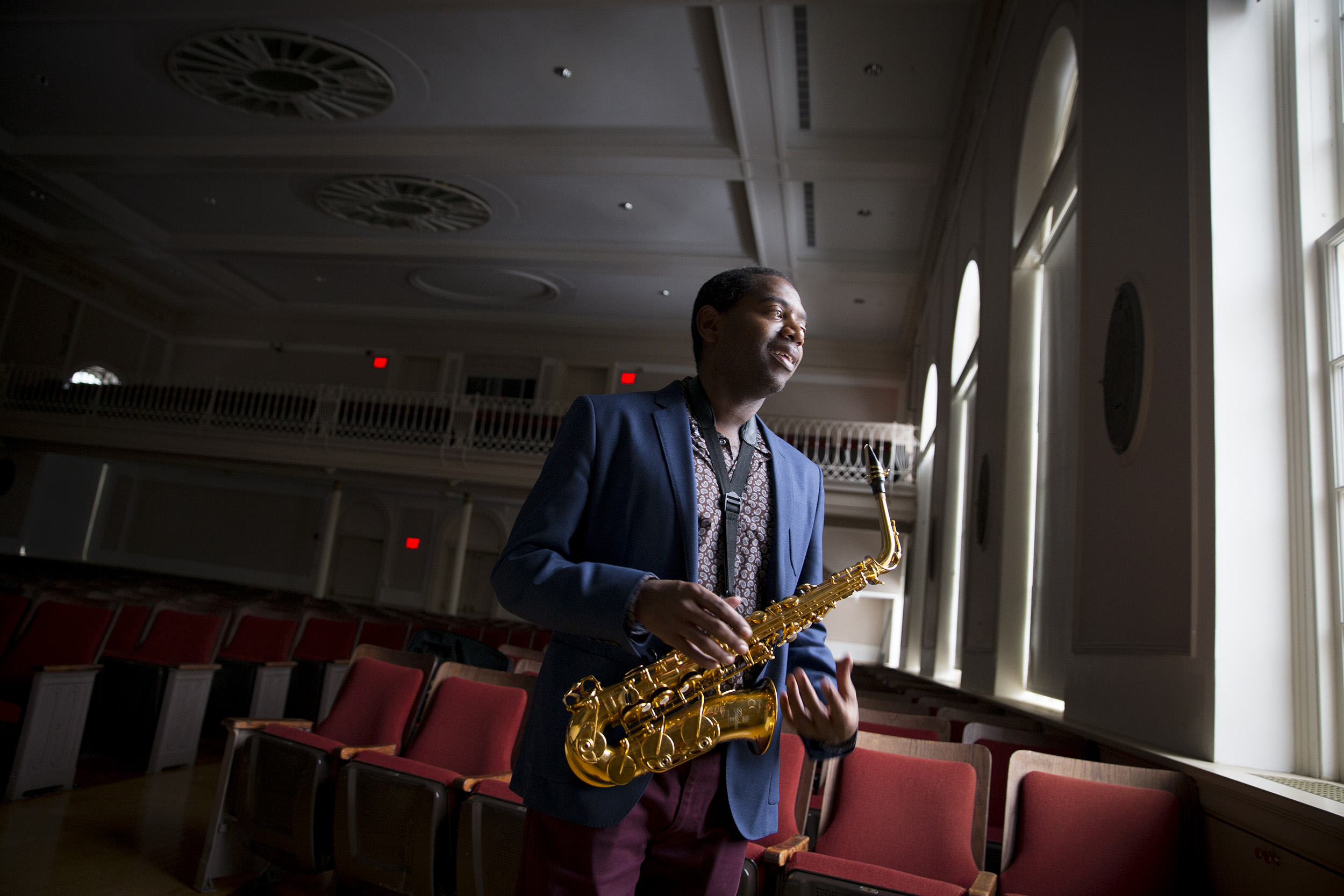
Harvard file photo
Saxophonist, percussionist, and composer Yosvany Terry, senior lecturer on music, director of Jazz Bands
When it comes to the performative aspect of music, artificial intelligence is not a concern to me. Music can transmit and represent emotion, and AI cannot do either of those things yet. And especially within jazz and creative music, music is in-the-moment composition, something that happens as musicians are collaborating onstage. That sense of interplay, or the ability to react in the moment, is something that artificial intelligence can’t reproduce because to do that requires being intelligent and having the agency to use your curiosity and your musical vocabulary. Only then, you can be able to react and create music in the moment.
With regards to composition, we know that AI has been used to compose music for film and television for quite a few years. That is a concern because AI is doing the work that musicians used to do. But when you hear those compositions by AI, they lack surprise, emotion, and even silence. I love dramatism in music, and for me, emotion in music is important, and AI is not there yet. As for how music gets to people, this is where we have seen tremendous changes. The many music platforms we have, such as Spotify, YouTube, iTunes, etc., use algorithm-based features, and they make musical recommendations based on what you listen to. We all know that AI is behind it. Musicians would like to see algorithms suggest composers who are less known rather than those who are already popular. The new technology should democratize the field, make sure that people have access to things that are outside the mainstream, and learn to recognize musical traditions that are not only from the Western world.
It’s important to welcome AI with open arms to try to understand what AI can do for us and work with it in creative ways. Any new technology is first seen as a threat to the status quo, like the way radio was received when it first aired. There have always been movements opposing those innovations. I don’t think AI is different, but we must remember that all these innovations are man-made, and as humans we can create and innovate. As a musician, I think we should open our eyes, ears, and arms to work with the new knowledge and innovation that AI can bring.
“AI is acting like a sort of collective unconscious.”
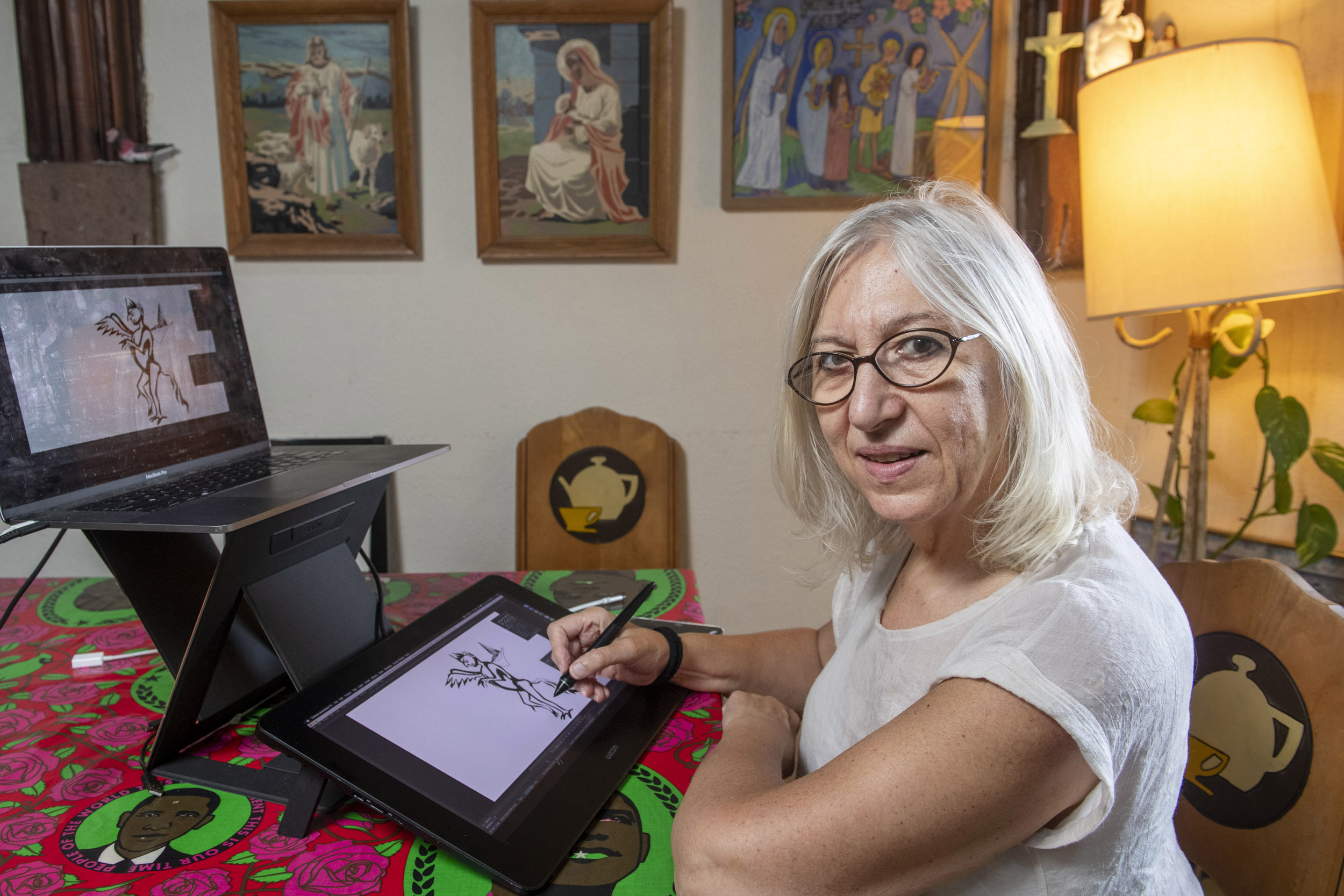
Jon Chase/Harvard Staff Photographer
Independent animator Ruth Stella Lingford, senior lecturer on Art, Film, and Visual Studies
Often, when I speak to my contemporaries in the animation world, they prefer not to think much about AI. But of course, we need to.
Generally speaking, AI does threaten jobs in the animation industry. I’m told that it is already being used in some large studios. But it will also be a collaborator.
I am told by a knowledgeable friend that it would be possible to train AI on my style and have it work as an assistant in my work. I can see how this would be useful, but, as I actually like the repetitiveness of the animation process, the idea is not very appealing, at least for my own personal work. But it might be a tempting idea in commercial jobs, though I have not explored it yet. In my personal work, the repetition of hand drawing (I draw on a digital tablet) gives me access to a less conscious, intentional side of the creative process, which I think makes the work richer and more nuanced.
Although it is maybe far-fetched to talk about AI as creative or imaginative, the melding of images from different sources, with large elements of the random, closely approximates some aspects of the creative process. AI is acting like a sort of collective unconscious, and I do find some of what it produces very interesting. I don’t suppose that animated films made entirely by AI would be very successful, but used with human guidance throughout the process, they could probably work very well.
I recently attended the Annecy Festival, and many people I spoke to there talked about “riding the shark” — harnessing the power of AI while staying in control. People also predicted the audience’s fatigue with the look of AI. It was noticeable that a high proportion of films shown at this year’s festival were made using recognizably analog techniques — stop-motion, animated painting, etc. — and this seems like a reaction against the dominance of computer-generated imagery in the last years. We do seem to want to see evidence of the human hand. Of course, AI may soon be able to simulate that absolutely seamlessly!
A programmer I spoke to was of the opinion that the panic over the power of AI is hype-manufactured by its makers to disguise its limitations and make it seem sexier. This person saw it going the same way as VR, seeming to offer unlimited potential, but then fizzling out. I would like to think that he’s right, but I can’t quite believe it.
“We should be grateful to be challenged and knocked out of our habits and assumptions!”
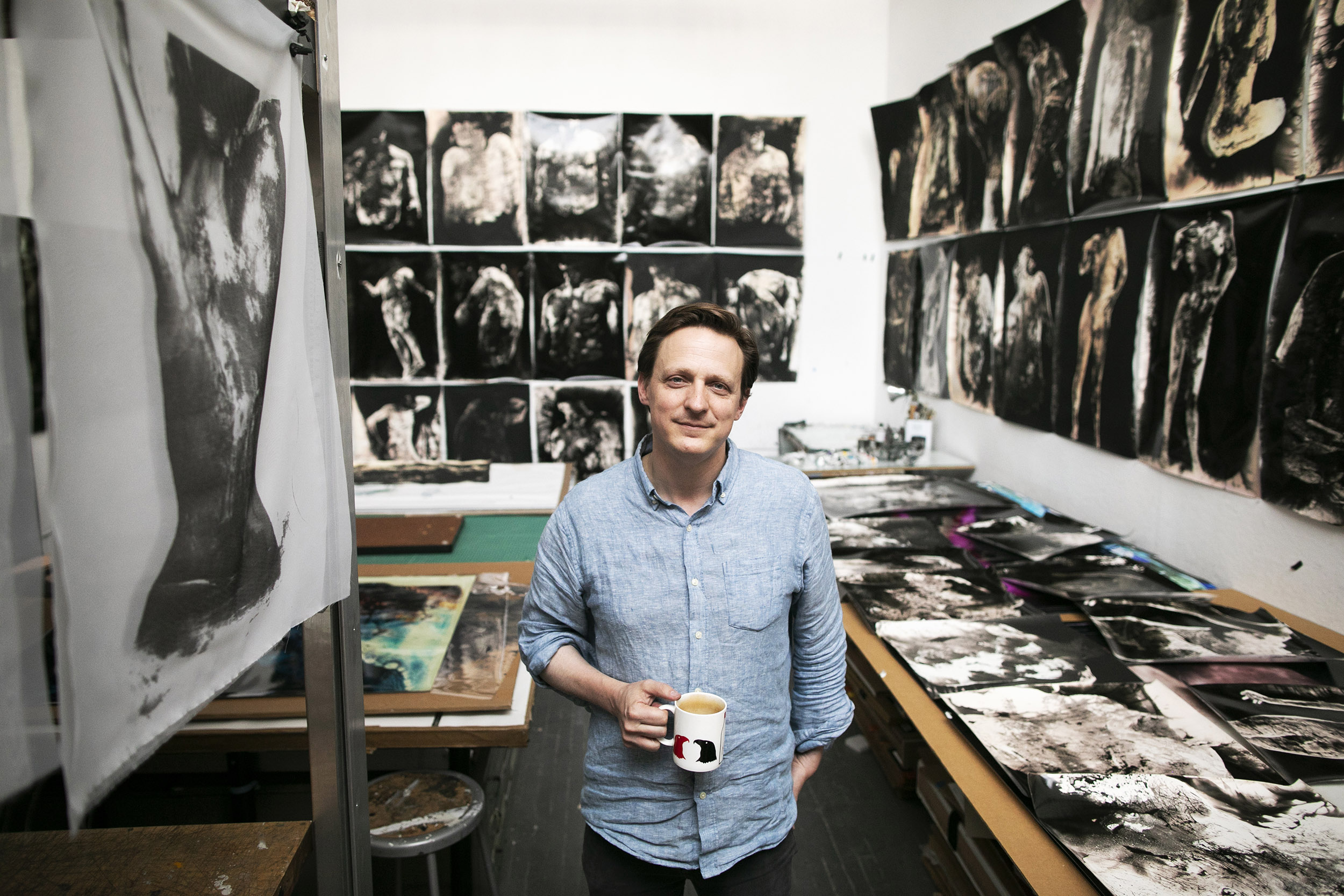
File photo by Stephanie Mitchell/Harvard Staff Photographer
Mixed-media artist Matt Saunders ’97, professor and director of undergraduate studies, Department of Art, Film and Visual Studies
To the question of whether AI can be a threat or collaborator, I might respond that every new technology upends conventions and delivers not only new possibilities but a new kind of material intelligence. I am sure many artists will be intrigued by the “agency” of AI and seek ways to grapple or collaborate with it. Many already are. And we should be grateful to be challenged and knocked out of our habits and assumptions! Most of the things that worry me about this fall into the realm of the social and ethical. I hope there are great artists to help us imagine around and work with this new reality.
As to whether it could be creative or comparable, I end up in circular thinking. Art means what we ascribe to it. It can be a provocation, but it is essentially always part of a conversation. Many artists are already using the inventions (and provocations) of AI in works of great substance, but of course the artists are still the ones bringing it into the room. If things change, maybe that will change too.
“If we ask the right questions, AI is going to give us significant answers.”
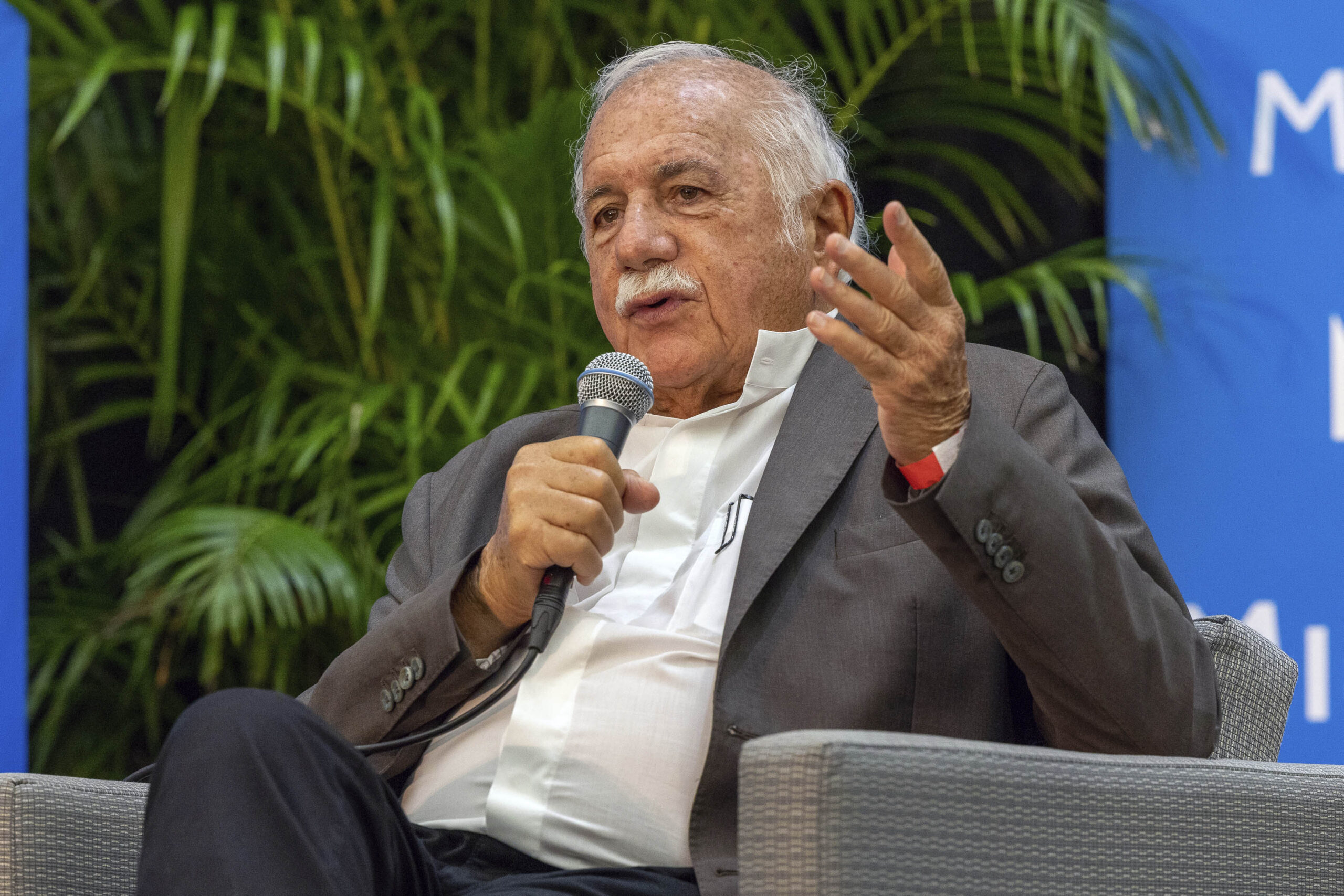
Sipa via AP Images
Architect and urban planner Moshe Safdie, design critic in architecture, Graduate School of Design
I’ve been following AI since the 1970s, when Marvin Minsky [one of the pioneers of artificial intelligence] and I spent time together. But AI has emerged as the product of an extraordinary computation capacity; algorithm, which is quite different from what Minsky had imagined when he started working on it. For him, AI was the science of making machines be as intelligent as humans, with the capacity for human reasoning.
Right now, it seems to me that AI has an extraordinary capacity to analyze, but I don’t see it yet doing the kinds of things we, architects, do in our head when we design, which involves taking into account a very large number of variables and sorting them out. And yet, as an architect, I think AI can change our lives. If we ask the right questions, AI is going to give us significant answers. For example, I can ask AI, “I have this building that’s sitting on this particular site, and I’d like to optimize the sun, the shadow pattern, and I’d like to position the windows at the place of optimal orientation,” and I think AI could give us a helpful response. We could perfect our designs or improve them based on the response. But I don’t think it’s going to give us the whole answer. For example, if you ask AI to make a garden with hideaways, clearings, and planting arrangements for all the seasons, I think it’ll do that very well. But if you want to have a garden arranged in a way that is magical and pleases you, I’m not sure it can do that.
I’m not frightened of AI at all. I’m intrigued. I think AI will be able to create graphic presentations of extraordinary beauty and interest, but that leads us to the question of what is art. Art has an element that is spiritual, emotional. It is something that happens when you look at Picasso’s “Guernica” and makes you think of the cruelty of humans to humans, or when you look at a Monet piece, and you feel the unity with nature. In terms of art created by AI, I don’t think we can call it art. I don’t see AI yet doing the kind of creative things we do. I can see that it composes a piece of music, but I don’t think it could create Beethoven’s last sonatas on its own. AI can imitate something that’s already been created and regurgitate it in another format, but that is not an original work.
When our firm designed the Jewel Changi Airport in Singapore, our idea was to have retail shops, airport facilities, and an attraction. The idea that this attraction should be a magical garden came from me. I wonder if AI could have come up with the same idea. I don’t think so, but who knows? That would be a very interesting test.
I don’t know if Minsky’s dream of artificial intelligence is attainable because it assumed that AI attains consciousness and independence of thoughts. Therefore, in some ways, artificial intelligence is a misnomer. Maybe I’m underestimating its capacity, but from where I stand as an amateur, because I’m an architect, not a mathematician, it seems to me that intelligence assumes a certain independence and consciousness, which I don’t think AI has right now.



